Computer Vision
 HowAiWorks
HowAiWorks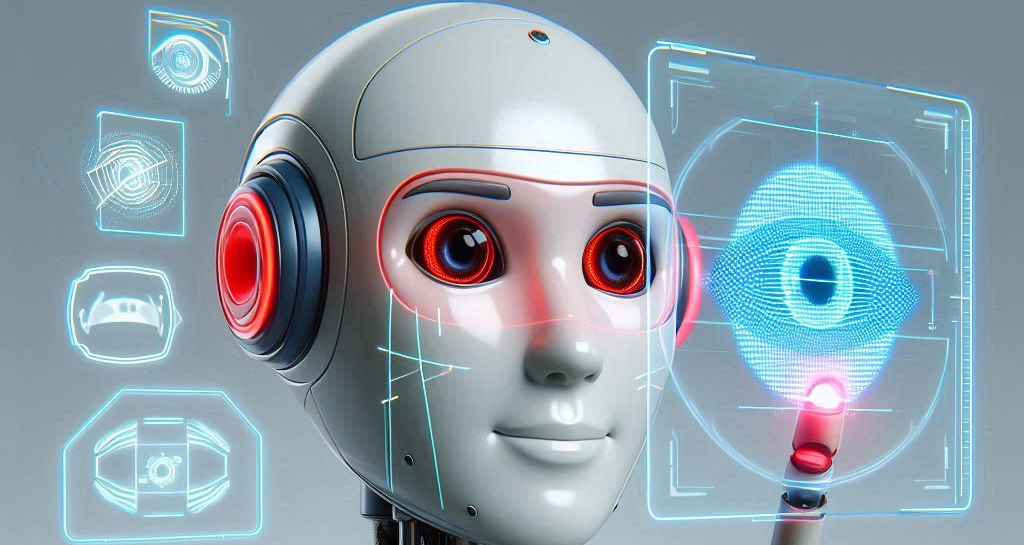
Understanding Computer Vision: The Eyes of AI
Computer Vision (CV) is an important branch of Artificial Intelligence giving machines the ability to see. This article provides a concise overview of the field, making it informative and accessible to newcomers and AI experts alike.
Core Concept of Computer Vision
Computer vision is a subfield of artificial intelligence (AI) that focuses on developing algorithms and models that allow computers to process, analyze, and understand images and videos. Essentially, it gives machines the ability to “see” and interpret the visual world much like humans do.
Key Techniques in Computer Vision
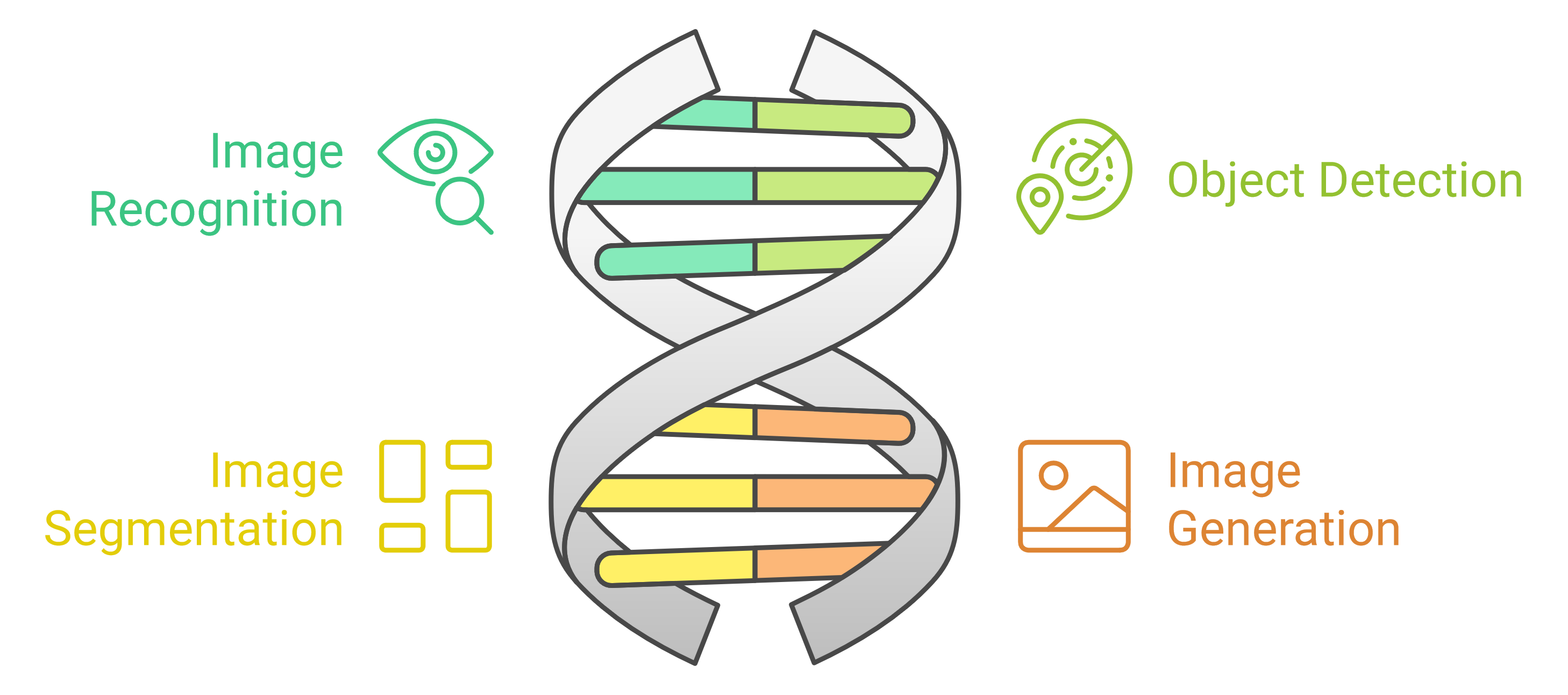
Image Recognition/Classification: Identifying specific features in an image, such as faces or objects.
Object Detection: Locating objects within an image or video.
Image Segmentation: Dividing an image into multiple segments for easier analysis.
Image Generation: Creating or transforming images using AI.
These techniques are powered by advanced machine learning models, particularly deep learning and convolutional neural networks (CNNs), which are trained on vast datasets to recognize patterns and features within images.
Real-World Applications
Computer vision is being used across a wide range of industries, each benefiting from its unique capabilities:
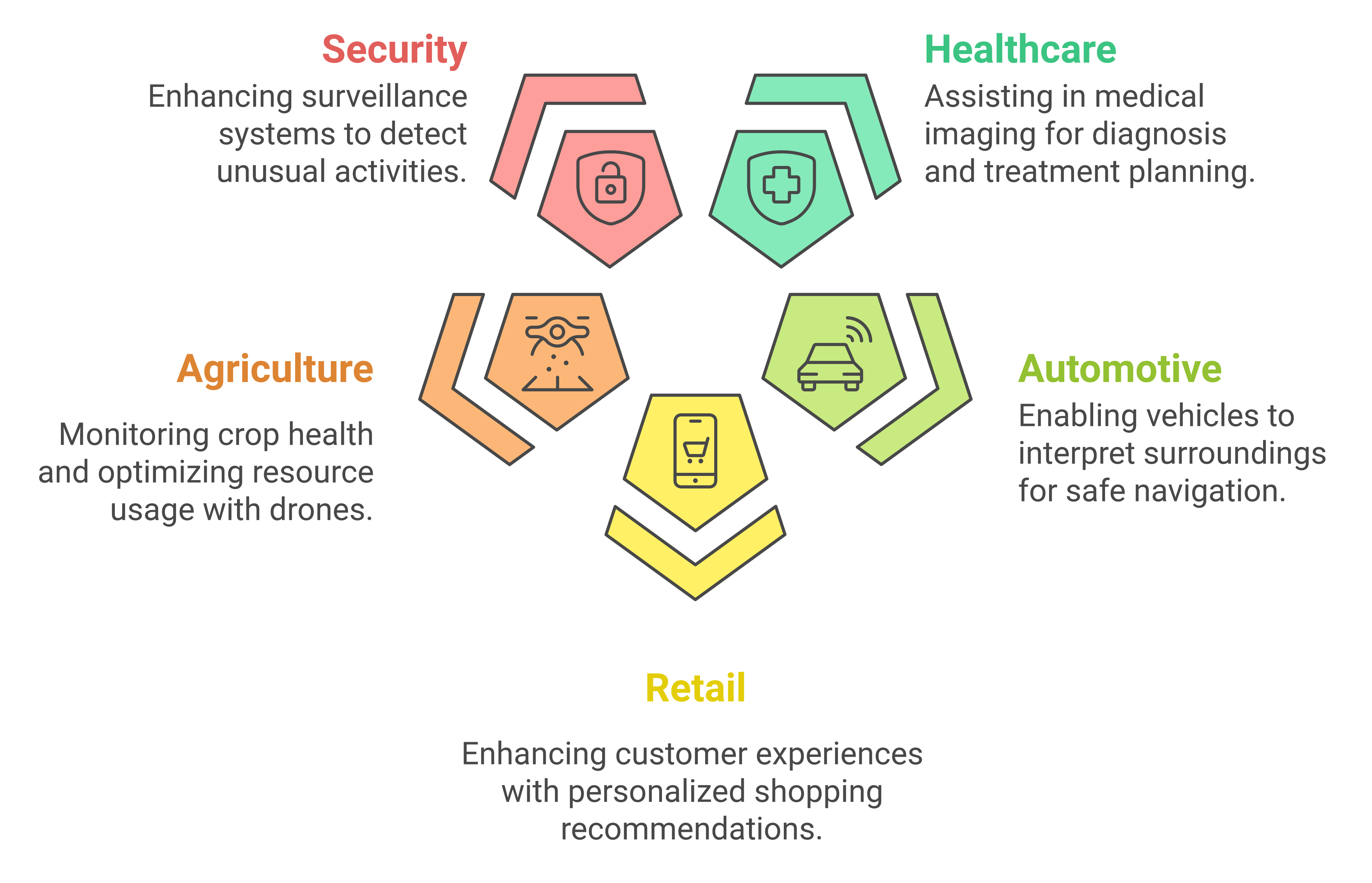
Careers in Computer Vision: Opportunities and Roles
Computer vision is a rapidly growing field within AI, offering diverse career opportunities as industries increasingly rely on visual data analysis. Here’s a brief overview of key roles, required skills, and future prospects.
Key Job Roles
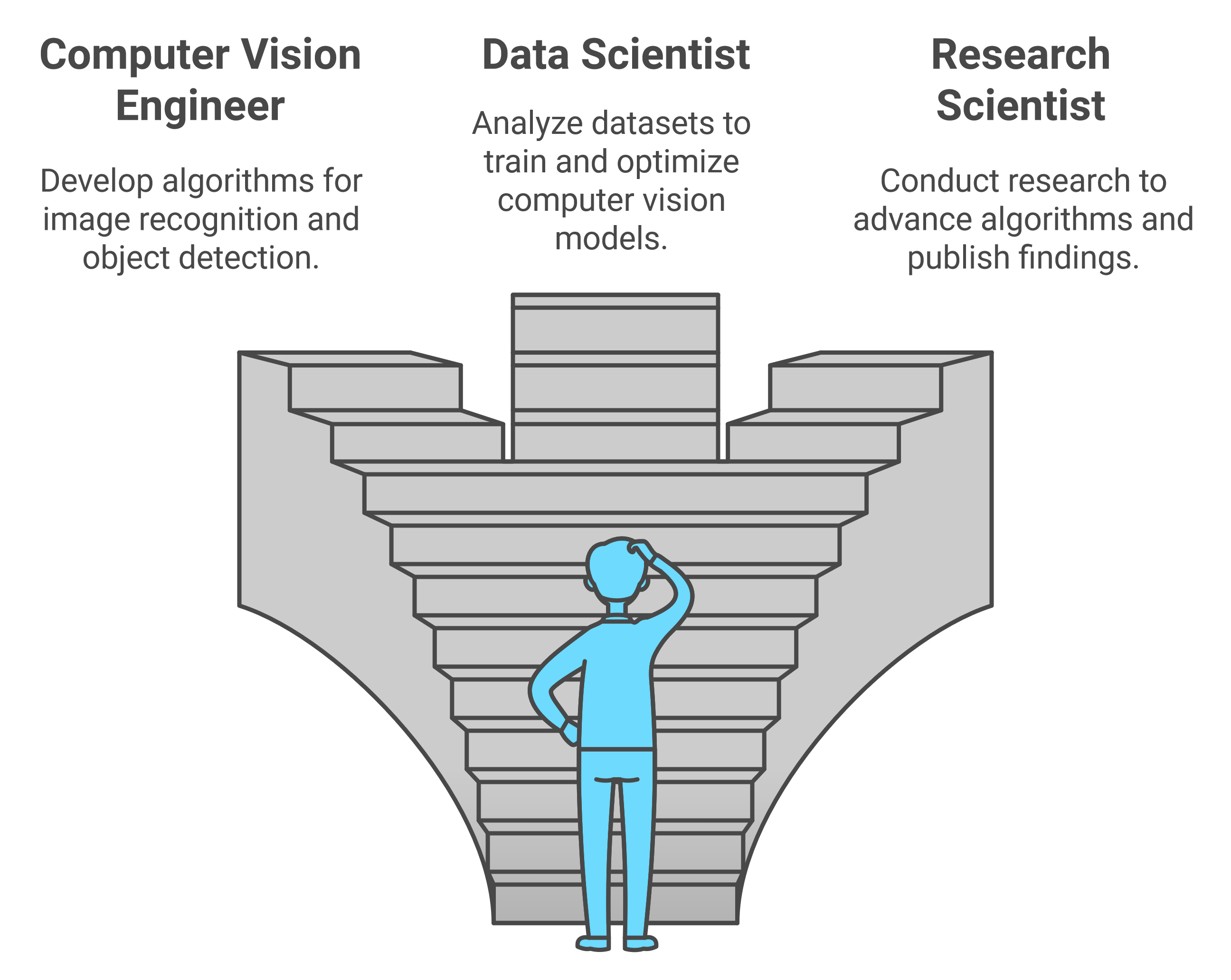
Computer Vision Engineer
Responsibilities: Develop algorithms for image recognition and object detection.
Skills Required: Proficiency in Python, C++, and libraries like OpenCV and TensorFlow.
Data Scientist (Computer Vision)
Responsibilities: Analyze datasets to train and optimize computer vision models.
Skills Required: Strong analytical skills and experience with machine learning frameworks.
Research Scientist (Computer Vision)
Responsibilities: Conduct research to advance algorithms and publish findings.
Skills Required: Advanced knowledge of neural networks and research methodologies.
Machine Learning Engineer (Computer Vision)
Responsibilities: Implement and integrate models into broader systems.
Skills Required: Strong programming skills and understanding of the software development lifecycle.
Skills Needed
Technical Skills: Proficiency in programming languages (Python, C++), experience with computer vision libraries, and knowledge of machine learning algorithms.
Soft Skills: Problem-solving abilities, attention to detail, collaboration skills, and effective communication.
Educational Background
A degree in computer science or engineering is typically required, with advanced degrees preferred for research roles. Relevant coursework includes machine learning and image processing.
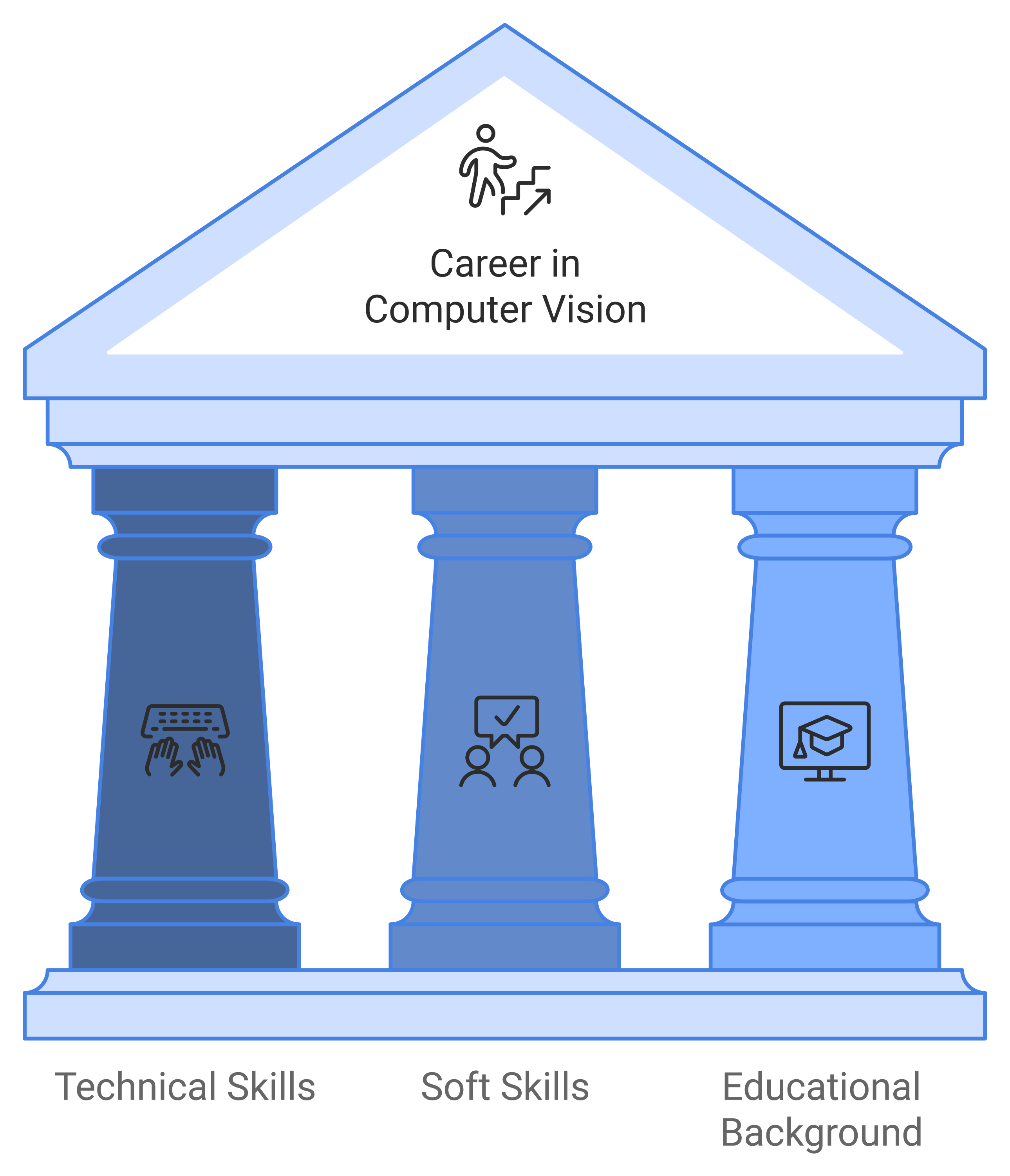
Future Prospects
The demand for computer vision professionals is expected to grow as more industries adopt AI solutions. Opportunities will expand with the integration of computer vision into IoT, robotics, and augmented reality.
Future Outlook
The future of computer vision is promising with continuous advancements expected in several areas:
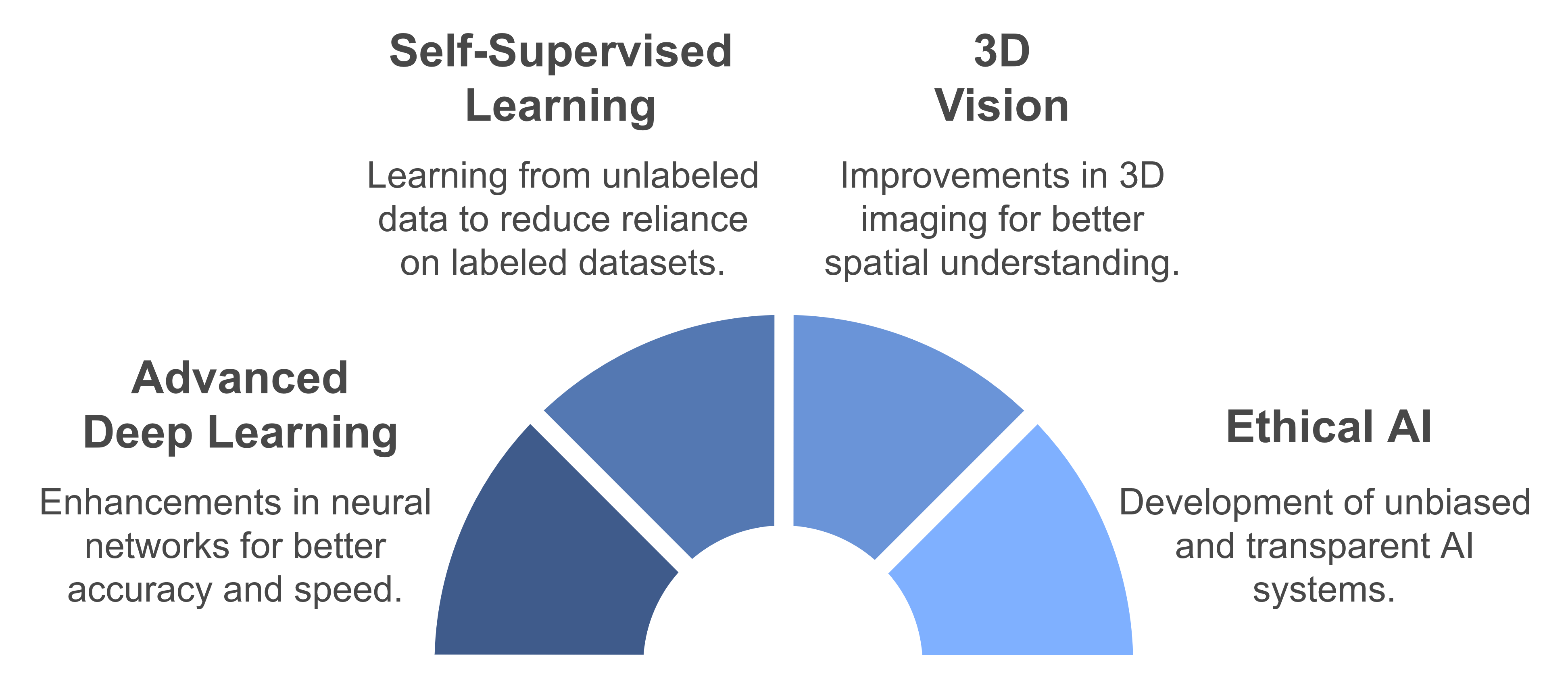
If you're interested in how computer vision can benefit your industry or have insights to share about its applications, comment below!
Sources
Anolytics. (2024, February 9). Understanding computer vision: Applications and working. Retrieved from https://www.anolytics.ai/blog/understanding-computer-vision-applications-working-benefits-drawbacks/
Neurosys. (n.d.). Seeing the future: An introduction to computer vision in AI. Retrieved from https://neurosys.com/blog/introduction-to-computer-vision-in-ai
Wikipedia. (n.d.). Computer vision. In Wikipedia, The Free Encyclopedia. Retrieved from https://en.wikipedia.org/wiki/Image_recognition
Cnvrg.io. (n.d.). 45 most popular computer vision applications by industry. Retrieved from https://cnvrg.io/computer-vision-applications/
Subscribe to my newsletter
Read articles from HowAiWorks directly inside your inbox. Subscribe to the newsletter, and don't miss out.
Written by
